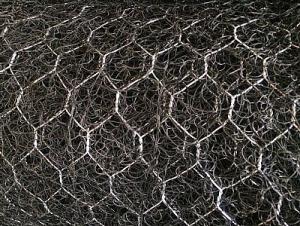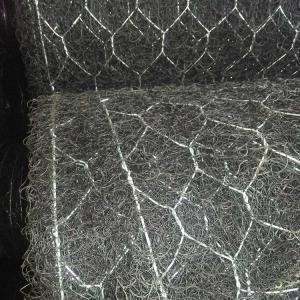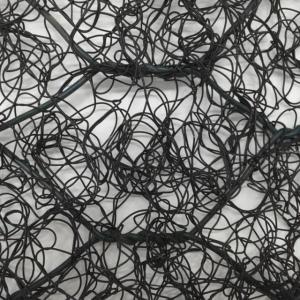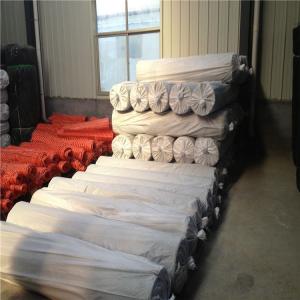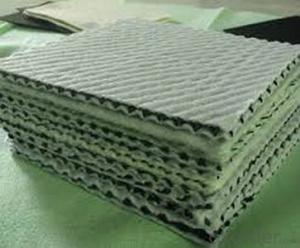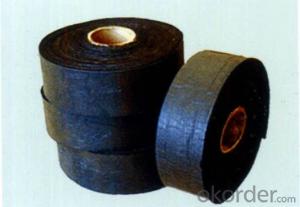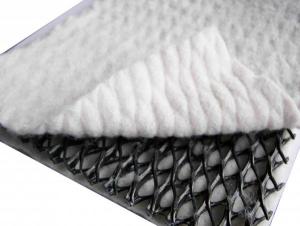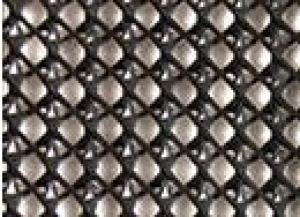Reinforced Mike Mat for Slope Protection
- Loading Port:
- Qingdao
- Payment Terms:
- TT or LC
- Min Order Qty:
- 1000 m²
- Supply Capability:
- 500000 m²/month
OKorder Service Pledge
OKorder Financial Service
You Might Also Like
Introduction of Reinforced Mike Mat for Slope Protection
The reinforced Geomat is PP mesh mat composited with wire mesh, which is galvanized in case of erosion control.
The structure allows enough space for keeping the soil and grass growing. It is malleable to suite the structure changing, and also easy to install.
It can be widely used to Road bed, Rail way, Slope protection, Sea coast protection & erosion control and Channel.
Technical Data Sheet of Reinforced Mike Mat for Slope Protection
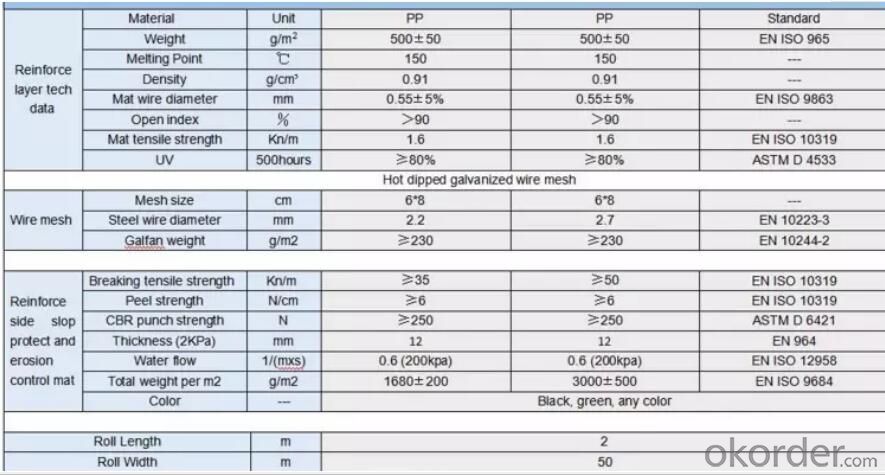
Features of Reinforced Mike Mat for Slope Protection
Anti-washout, can be widely used in slope surface anti-washout protection.
Water permeable,the aperture of Mike Pad help to diacharge the water of soil.
Plantable,The Mike pad creates the conditions for water flow , which makes plants can grow.
Long service time,Economical,Easy construction
Application of Reinforced Mike Mat for Slope Protection
a) Public / railway embankment, embankment, cutting, bridge abutments
b) Landslides, mudslides and control engineering
c) Inland port, coastal protection, urban construction of retaining structures, river training works


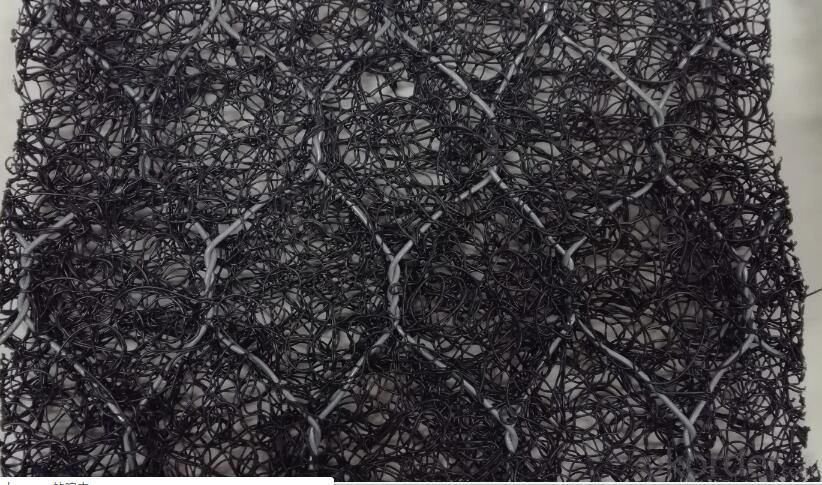
- Q:Material molding and control technology and civil engineering is not near professional?
- No, there is a big difference
- Q:Can erosion control blankets be used on slopes?
- Yes, erosion control blankets can be used on slopes. They are specifically designed to prevent soil erosion on steep slopes by providing stabilization, reducing surface water runoff, and promoting plant growth.
- Q:What is the difference between building materials and civil engineering materials?
- Civil engineering requires the use of materials, and a qualified civil people, must know the nature of the relevant materials and cost-effective! Civil engineering, including bridge engineering, water conservancy projects, culvert engineering, civil engineering and a series of projects, civil engineering is a general category! Architectural design is a small branch of civil engineering. The corres
- Q:How do earthwork products help with wetland creation?
- Earthwork products, such as fill materials and geotextiles, play a crucial role in wetland creation by providing necessary structural support and promoting appropriate hydrological conditions. Fill materials are used to elevate the ground and create suitable topography for wetlands, ensuring proper water retention and drainage. Geotextiles, on the other hand, aid in erosion control and stabilization of soil, preventing sedimentation and promoting vegetation growth. By using earthwork products, wetland creation projects can effectively mimic natural wetland conditions and establish a thriving ecosystem.
- Q:Are earthwork products resistant to extreme temperature variations?
- Yes, earthwork products are generally resistant to extreme temperature variations. The inherent properties of earth materials, such as soil and rock, allow them to withstand temperature changes without significant damage. However, it is important to note that certain earthwork products may require additional measures, such as proper compaction or stabilization techniques, to ensure better resistance to extreme temperature variations.
- Q:Are those issues focused?
- The first chapter of the basic properties of civil engineering materials Chapter II of the hard inorganic inorganic cementitious materials Chapter III of the cement Chapter IV of concrete
- Q:Are earthwork products suitable for constructing fish ponds?
- Yes, earthwork products are suitable for constructing fish ponds. Earthwork products, such as clay, soil, and geomembranes, can be used to create a stable and watertight foundation for fish ponds. These materials can be shaped and compacted to create the desired pond structure, ensuring proper containment of water and a conducive habitat for fish. Additionally, earthwork products can be used to create slopes, berms, and other features that aid in water management and maintenance of the fish pond.
- Q:What are the benefits of using geosynthetic clay liners in pond liners?
- Geosynthetic clay liners offer several benefits when used in pond liners. Firstly, they provide excellent hydraulic performance, effectively preventing the seepage of water or contaminants through the liner. Secondly, these liners have a high resistance to puncture and tear, ensuring long-term durability and preventing damage. Additionally, geosynthetic clay liners are easy to install and require less maintenance compared to traditional clay liners. They also have a lower carbon footprint and are more cost-effective, making them a sustainable and economical choice for pond lining applications.
- Q:How do earthwork products contribute to noise reduction in construction projects?
- Earthwork products, such as soil, gravel, and rocks, contribute to noise reduction in construction projects by acting as natural sound barriers. When these materials are properly applied and compacted, they absorb and dampen sound waves, preventing them from traveling and reducing the overall noise levels generated by construction activities. Additionally, earthwork products can help create berms or mounds that physically block and redirect noise away from sensitive areas, further contributing to noise reduction in construction sites.
- Q:What are the advantages of using earthwork products?
- There are several advantages of using earthwork products. Firstly, they are cost-effective as they are made from natural materials found in the earth, reducing the need for expensive synthetic alternatives. Secondly, earthwork products are environmentally friendly as they have a low carbon footprint and do not contribute to pollution. They are also highly durable and long-lasting, providing stability and strength to construction projects. Additionally, earthwork products are versatile and can be used in a variety of applications such as landscaping, erosion control, and drainage systems. Overall, using earthwork products promotes sustainable construction practices and offers numerous benefits in terms of cost, environmental impact, durability, and versatility.
1. Manufacturer Overview |
|
|---|---|
| Location | |
| Year Established | |
| Annual Output Value | |
| Main Markets | |
| Company Certifications | |
2. Manufacturer Certificates |
|
|---|---|
| a) Certification Name | |
| Range | |
| Reference | |
| Validity Period | |
3. Manufacturer Capability |
|
|---|---|
| a)Trade Capacity | |
| Nearest Port | |
| Export Percentage | |
| No.of Employees in Trade Department | |
| Language Spoken: | |
| b)Factory Information | |
| Factory Size: | |
| No. of Production Lines | |
| Contract Manufacturing | |
| Product Price Range | |
Send your message to us
Reinforced Mike Mat for Slope Protection
- Loading Port:
- Qingdao
- Payment Terms:
- TT or LC
- Min Order Qty:
- 1000 m²
- Supply Capability:
- 500000 m²/month
OKorder Service Pledge
OKorder Financial Service
Similar products
New products
Hot products
Hot Searches
Related keywords


